"This is the first time in my work that I've really gone out on a limb and made a very specific prediction - I didn't give myself any elbow room... If we're right, then it's a huge success and you can find very dim or effectively dark galaxies simply by analysing disturbances in the gas disk." -Sukanya Chakrabarti
There's a long-standing problem in the field of dark matter research, which is so distressing that it has led a few people to abandon dark matter altogether.
What am I talking about?
This -- roughly -- is what the matter in our Universe looks like on the largest scales. Great filaments of matter connect in a great cosmic web, and the intersections of the largest, strongest filaments correspond to the densest, richest collections of matter in our Universe today, such as clusters and superclusters of galaxies.
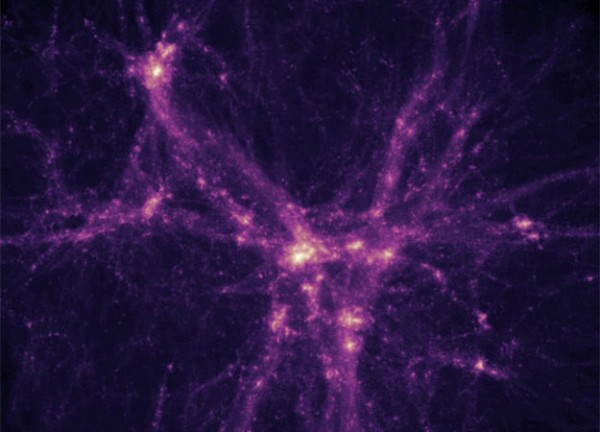
Our simulations and our observations, on these large scales, match up as accurately as we've been able to measure. But what happens if we come down to smaller scales?
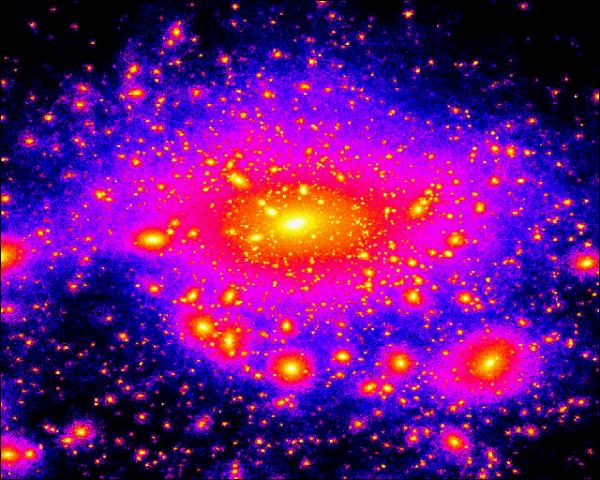
On the scale of just a single large galaxy -- like us, perhaps -- our simulations tell us that each galaxy should get a large, diffuse halo of dark matter with a thin disk of atoms at the center. Which is perfectly consistent with what we do observe, as well.
But they also predict a large number of very low mass satellites, and we don't observe those.
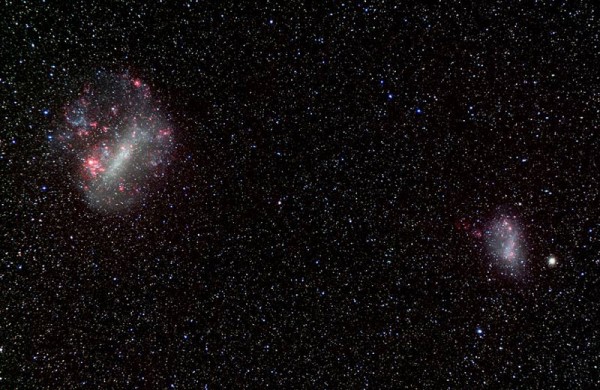
"Hang on a minute," you might say. "What about the Magellanic Clouds?"
Of course the Milky Way does have many small satellite galaxies. Dozens of them, in fact, and that number gets up into the hundreds if you include globular clusters. But our simulations predict many, many more than we observe, and this is a genuine problem for our models of structure formation. We're pretty confident that we've nailed it on large scales, but the small scales have issues. What are the possible resolutions?
- Our models for structure formation are all wrong. There's no dark matter, and our laws of gravity are wrong, and the fact that large-scale structure works as well as it does is nothing more than a lucky coincidence.
- There's a problem with our simulations on small scales. Perhaps dark matter has low-energy interactions that we don't understand well, perhaps the way galaxies merge and grow works different than our simulations tell us, or perhaps we keep making an unidentified mistake over and over again.
- The simulations and our models are both correct, and the flaw lies with our observations. Perhaps these satellite galaxies are there, but they're much dimmer than we anticipated, and we haven't found them simply because we don't know where to look.

On most days, I think option 2 is the most likely. But a BBC story alerted me
to this paper (full text here) by Sukanya Chakrabarti and her collaborators, entitled Finding Dark Galaxies From Their Tidal Imprints.
If option 3 is correct (or even partially correct), this is a group of astronomers really sticking their necks out there to find them. Here's what they're doing.
This is M51, the Whirlpool Galaxy, a gorgeous face-on spiral galaxy. The more astute among you will notice that it's also an interacting galaxy, as the large spiral is in the process of merging with a smaller galaxy about one-third its size (and slightly behind it, from our point of view).
But if we only focus on the hot hydrogen gas from this object, we see that it sweeps out in a great tail-like shape, with some disruptions in it! It turns out, as this paper discusses, that this exact phenomena can be modeled by simulations, which the authors do.
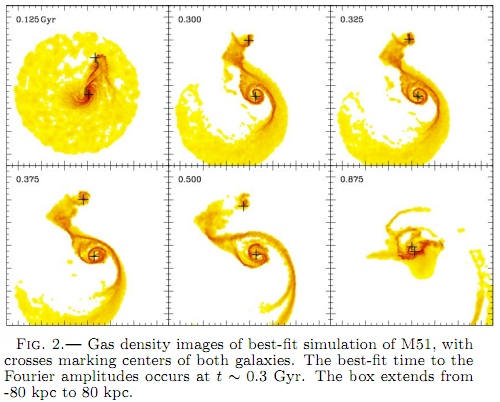
And just from their model, they can tell you precisely where (and of what mass) the secondary, smaller galaxy is. But that's a well-known one, where the small galaxy is only a third the mass of the large one. What about a more extreme case, like we're likely to find near the Milky Way?
Say hello to NGC 1512, as shown in both visible and ultra-violet light. With dusty lanes and hot gas, it's another ideal candidate for this analysis. But unlike M51, the companion galaxy to NGC 1512 is only a few percent of its mass. And when we look at the hot Hydrogen gas, we find the same disturbances in the tail of the gas.
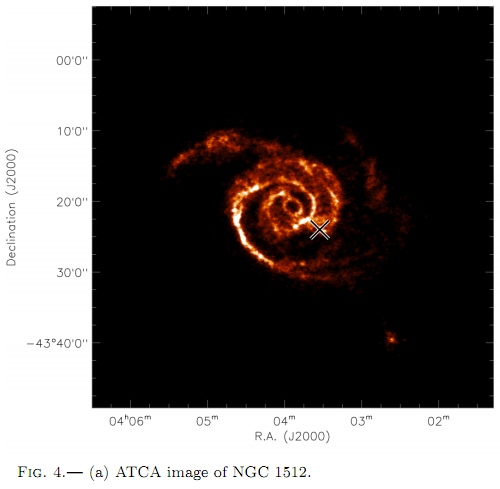
Again, the same analysis -- through simulations -- allows us to predict where the companion galaxy ought to be and what mass it ought to have to produce these patterns. And what do we find?

It nails it again. Chakrabarti says that this method should be useful for finding the locations of satellite galaxies as small as 0.1% the mass of the large spiral, and will be getting telescope time to search for a satellite to the Milky Way where she predicts it ought to be.
These dwarf galaxies could really be there, and they could just be much dimmer than we'd be able to detect without a dedicated search for them. I will, of course, be skeptical until the galaxy is actually found in the location it was predicted to be. But this is my favorite kind of science: using only the laws we know and understand to make concrete predictions that, if verified, will be a huge step towards solving this puzzle.

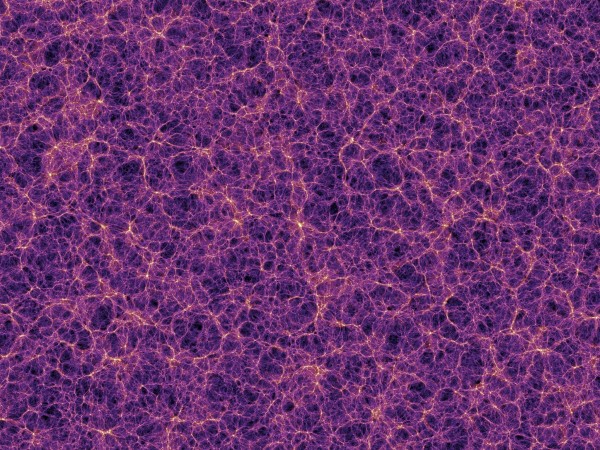
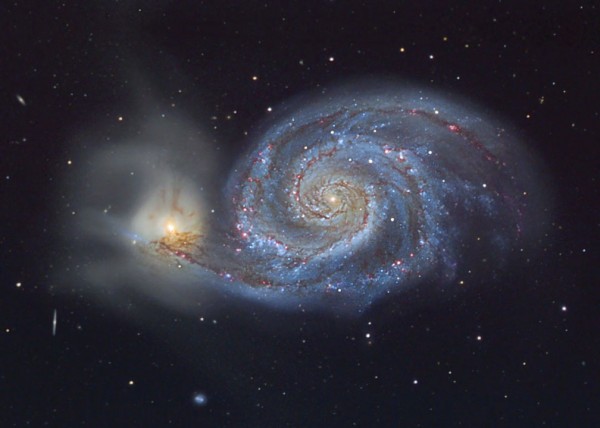
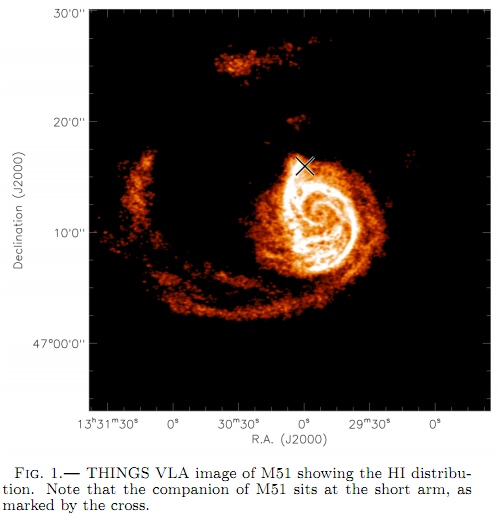
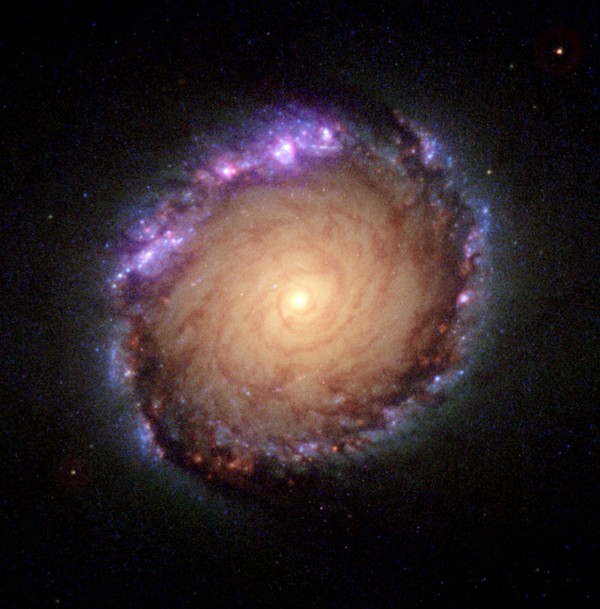
This is very encouraging! One minor quibble: I thought the standard picture of globular cluster formation is that they are formed through old-fashioned gas dynamics. (I may be remembering this incorrectly). If I'm right, you can't include them as visible markers of dark matter substructure.
Those first two pictures in this post look like neural tissue that has been fluorescent stained and is under a microscope. Weird!
That natural "inorganic" processes can be gathered into structures at different scales and wind up looking weirdly like life structures, that is, that nature seems to use the same kinds of structure over and again, bodes well for the suggestion that the inner space of life extends further than we think.
I have a friend named Conal Boyce who has a book available on Amazon entitled "The Chemistry Redemption" where he does a bunch of rather droll philosophy, explains why he thinks the Chemistry path to the theory of everything is more elegant and compact than the physics path, tweaks humans for being too dependent on information when the universe mainly loves to destroy information beyond recovery, and suggests that a very rapid form of life at the atomic level is the main locus of the universal drama. Just fyi. This is serious work, sort of, but he has a great deal of fun along the way. Think Ray Smullyan.
I like very much the idea that much if not most of dark matter turns out to be hidden regular matter that we have not clearly seen for some good reason. That will account for 30% of everything. Erk. We aren't done by a long shot, it looks like. I really dislike dark energy in the sense that it makes me suspect we haven't got the basics right yet. It just doesn't feel right that 70% of everything behaves in this weird repulsive way.
On the subject of simulations, Stanislaw Ulam, a Manhattan Project mathematician, is supposed to have said something along the line of: âGive me 15 free parameters, and I can draw an elephant. Give me 16, and I can make it dance.â
Hereâs a couple of dancing elephants that involve recent discoveries âconfirmedâ by simulations that appear to work at cross purposes with each other:
Dancing elephant #1:
From an August 2008 article
Cosmic voids really are devoid of matter. Astronomers have found that even the pervasive âdark matterâ which accounts for about 80% of the mass of the universe is not present in these voids, which are areas of vast emptiness in space that can be tens of millions of light-years across. âAstronomers have wondered for a quarter-century whether these voids were âtoo bigâ or âtoo emptyâ to be explained by gravity alone,â said University of Chicago researcher Jeremy Tinker, who led the new study using data from the Sloan Digital Sky Survey II (SDSS-II). âOur analysis shows that the voids in these surveys are exactly as big and as empty as predicted by the âstandardâ theory of the universe.â
And later in the article:
âWhen we used galaxies brighter than the Milky Way to trace structure, the biggest empty voids we found were about 75 million light years across,â said Conroy. âAnd the predictions from the simulations were bang-on.â
Bang on. I like that.
Dancing elephant #2
From a more recent January 2010 article by Stacey McGaugh, et al:
"As we looked at smaller objects - individual galaxies and satellite galaxies, the normal matter content gets steadily less," he says. "By the time we reach the smallest dwarf satellite galaxies, the content of normal matter is only ~1percent of what it should be. (Such galaxies' baryon content is ~0.2percent instead of 17percent). The variation of the baryon content is very systematic with scale. The smaller the galaxy, the smaller is its ratio of normal matter to dark matter. Put another way, the smallest galaxies are very dark matter dominated.
"This raises an obvious question," McGaugh says, "where are all these missing baryons? The short answer is, we don't know. There are various lines of speculation, most of which are either easily dismissed or are un-testable. So for now this is a problem without an obvious solution."
So, it should follow logically that ultra dwarf galaxies, those that are so dwarfish as to be undetectable and manage to reach a vanishing point, should be surrounded by an apparent âvoidâ containing no baryonic matter at all and 100% dark matter.
Not according to dancing elephant #1 of the 2008 paper.
Observing this flailing around by various cosmologists is interesting, but Iâm curious to know whether thereâs a kind of phase transition where all dark matter flees from a void once a dwarf galaxy reaches a point of nonexistence. A ridiculous notion, I know, but can Ethan provide an explanation? (Preferably one that does not have to resort to MOND. Thatâs McGaughâs baby. Iâm focusing exclusively on his observations and nothing else).
I know I am waking up a very old thread, but the Internet allows for that, so...
I propose that dark matter AND dark energy are simply the sum total of all of the emissions of all of the stars in the universe, commonly called "light" (although there are other emissions that I propose to also be part of the "dark" stuff). I am no professional physicist, but if light can be pulled into a black hole, than light has mass (dark matter) and obviously light can act as energy, so there you go... billions of years of star emissions zipping through space. With nothing to hit or reflect off of, they are "dark". We only think of what we can see, but light is invisible until it hits something. Oh, and the reason the first picture looks like a neural network, I propose, is because it is. Why not? We are simply a part of the brain of some larger, thinking thing.
Okay, okay, laugh if you want... but laugh to yourself unless you can explain why I'm wrong (on all points above).
@Jesse Chunn #5: "I am no professional physicist" is not an excuse for ignorance (as the phrase "I am not a ..." seems to be among the wilfully ignorant). It should be an impetus for education.
Light doesn't have mass. It has energy. Energy is affected by gravity.
The "billions of years of star emissions" are called the "extragalactic background light" and it is a very well understood and measured phenomenon. I encourage you to look it up (if you're willing or interested in self-education).
The reason the first picture "looks like" a neural network (I presume you mean a section of the brain, rather than the computational system) is simply because both have similar structural features. Just because I can cut out something beautiful hexagonal symmetry from paper, doesn't mean that paper and snow are the same thing.
I"m not laughing, I'm merely bemused by your wonderful demonstration of the Dunning-Kruger effect.
"processes can be gathered into structures at different scales and wind up looking weirdly like life structures, "
fibbonaci series is seen again and again in nature. The reason for it is simple rules, so simple they require an actual LACK of knowledge of any large structure.
That they exist isn't indication of some "extending inner space" but of the fact that there IS nothing organising the systems.
"Okay, okay, laugh if you want"
Wilco.
Didn't need nor want your permission, though. And I don't really know that there was enough coherency in the bits I read rather than skimmed to make it worth reading the rest of it.
Next time, try fleshing out your theory a bit before presenting it.